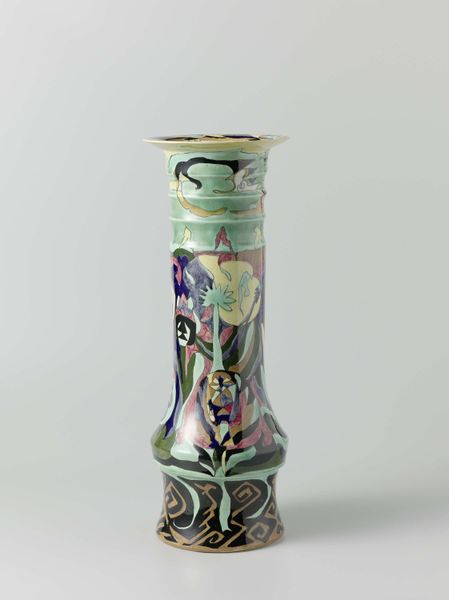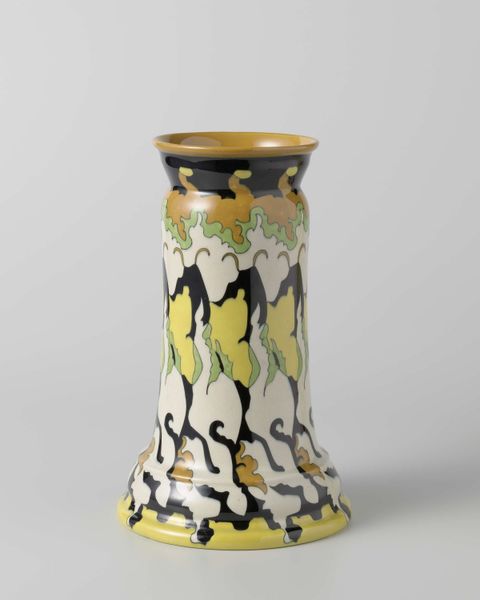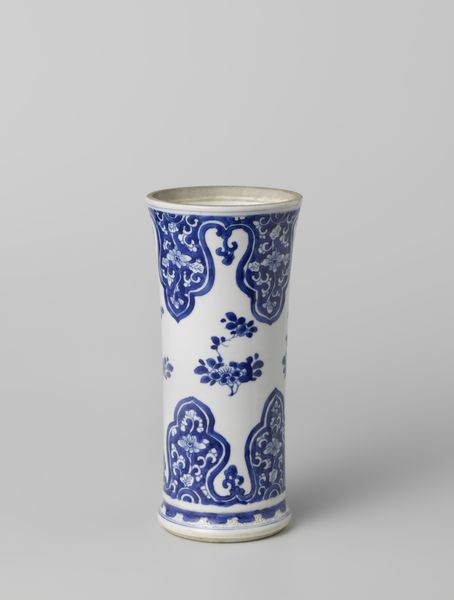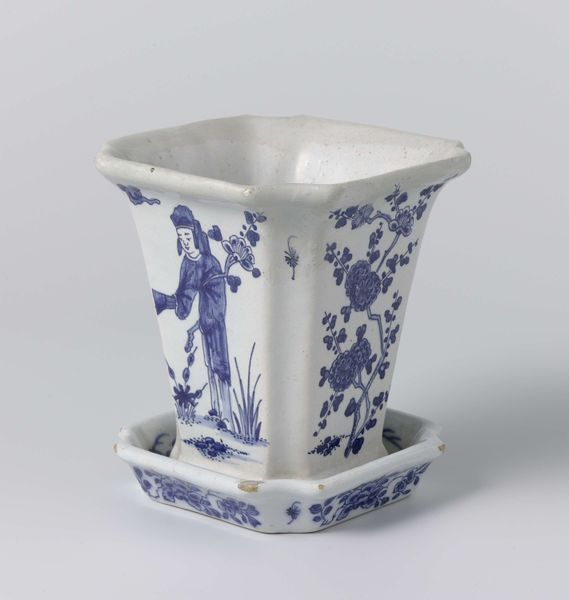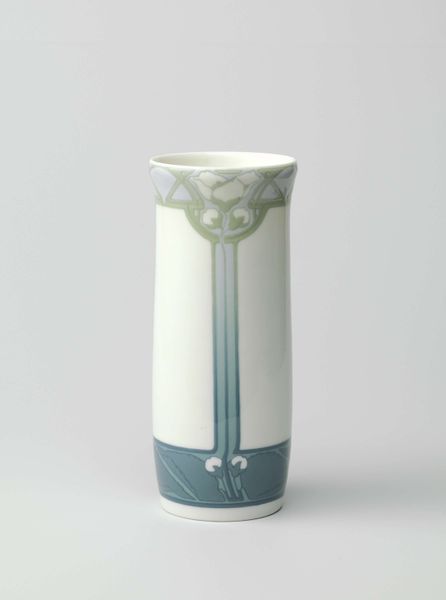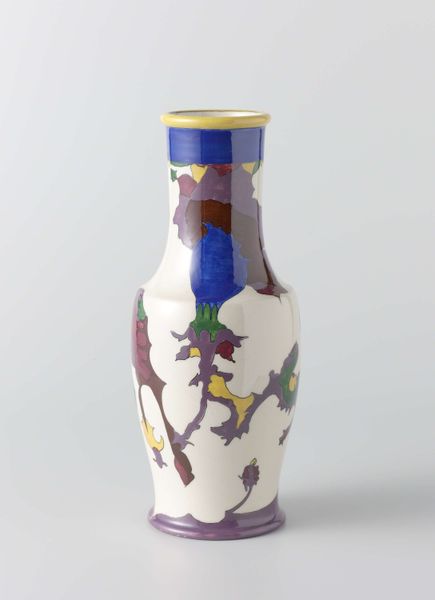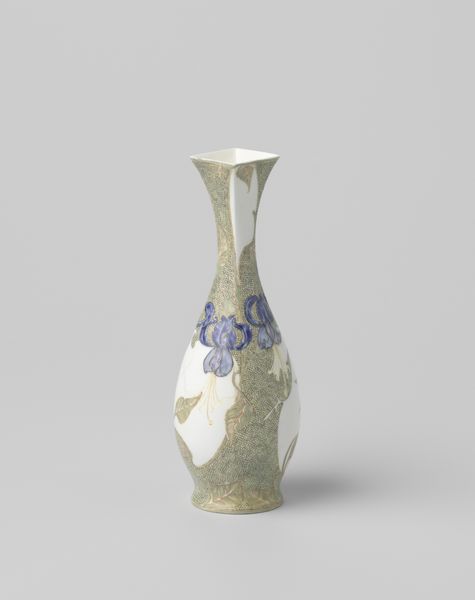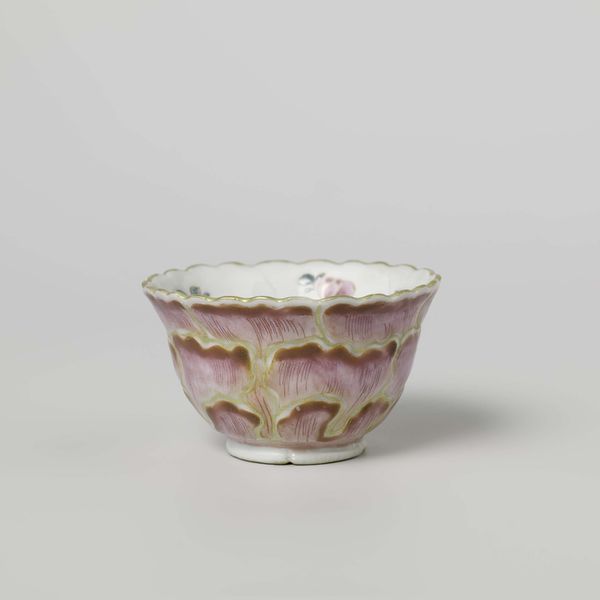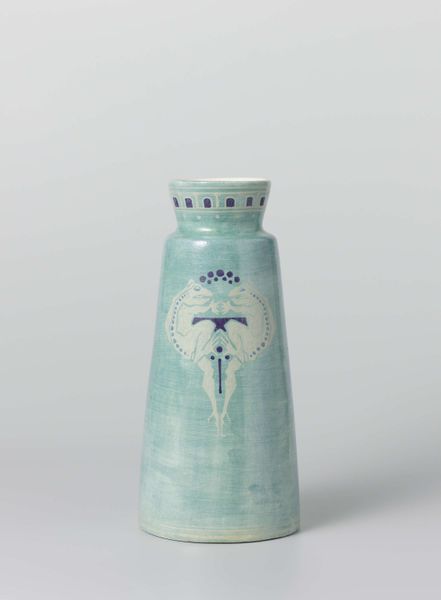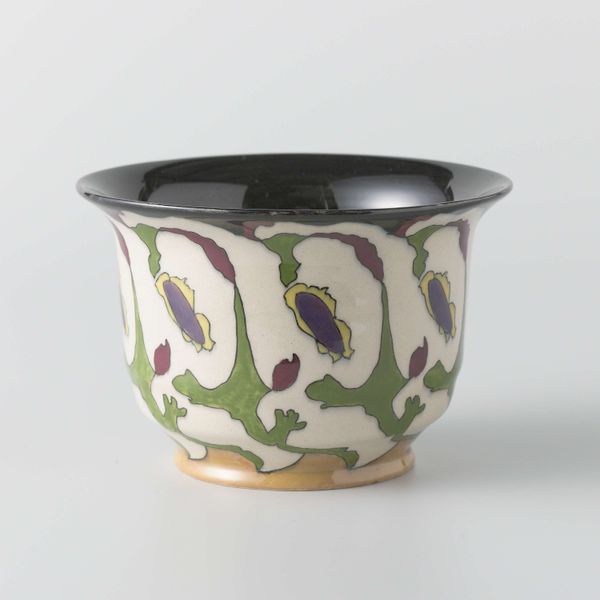
ceramic, earthenware
#
ceramic
#
earthenware
#
ceramic
#
decorative-art
Dimensions: height 20.7 cm, diameter 13.0 cm
Copyright: Rijks Museum: Open Domain
Editor: Here we have the "Vase with the ‘Onkruid’ (Weed) pattern", made around 1923-1927 by N.V. Plateelbakkerij Ram, crafted from earthenware. It's so playful, but a bit...unsettling? Like a beautiful garden gone wild. What do you make of it? Curator: Oh, "weed pattern"—isn't that fantastic? Such a glorification of the unexpected! It feels like someone said, "Let's find beauty where others dismiss it." It's decorative art, absolutely, but is it also a sly commentary on control and nature? A celebration of the untamed? What colours jump out at you? Editor: The muted greens and reds, definitely, with pops of that brighter yellow. They feel almost clashing but somehow harmonious? I'm curious about the choice to focus on weeds specifically. Curator: Yes! That's where it gets juicy. Think about the time. This is post-World War I. Order and tradition have been completely upended. Is the artist embracing a kind of chaotic beauty as a response to that? Were weeds maybe a metaphor for resilience, for life finding a way even in ravaged landscapes? The colours fight a bit, sure, but like a mismatched band of friends who create brilliant music together. Editor: That makes a lot of sense. So, it's not just a pretty vase, it's almost like a quiet act of rebellion in ceramic form! I'll never look at weeds the same way again. Curator: Precisely! That’s the delightful magic of art, isn't it? It's less about *what* you see, and more about what the art helps you *imagine*… and maybe a bit about what it allows you to rethink, to celebrate, in your own life.
Comments
No comments
Be the first to comment and join the conversation on the ultimate creative platform.
